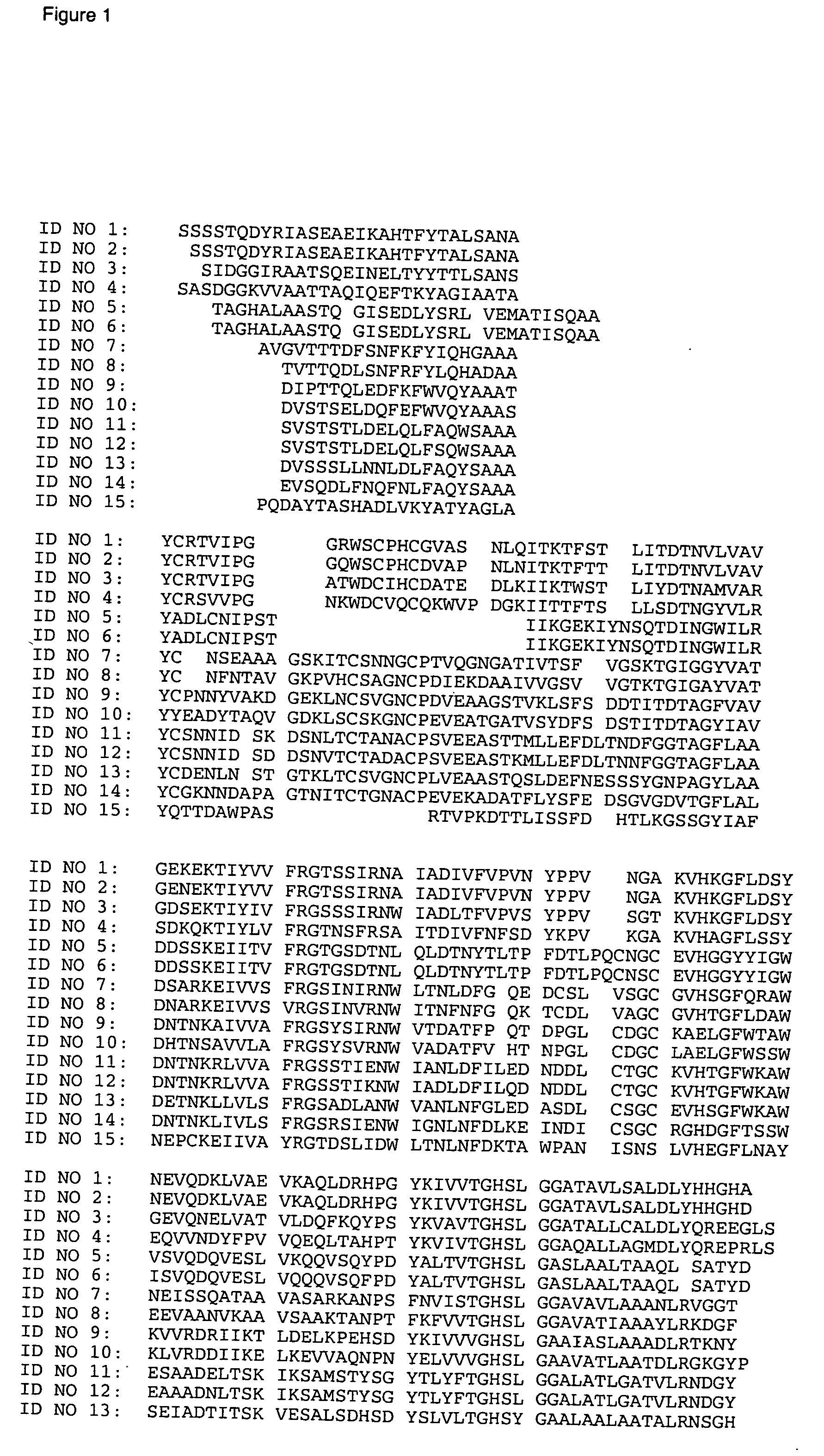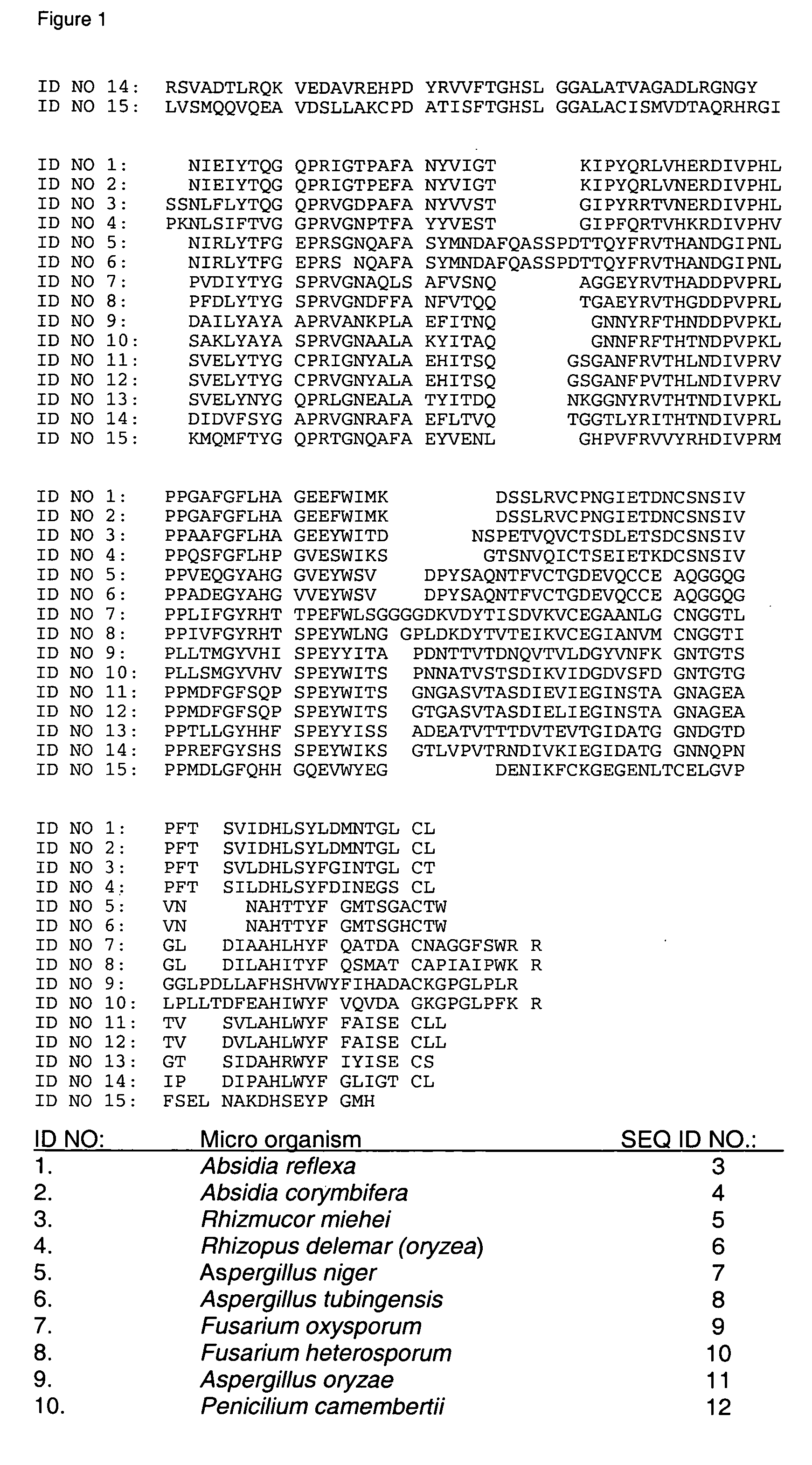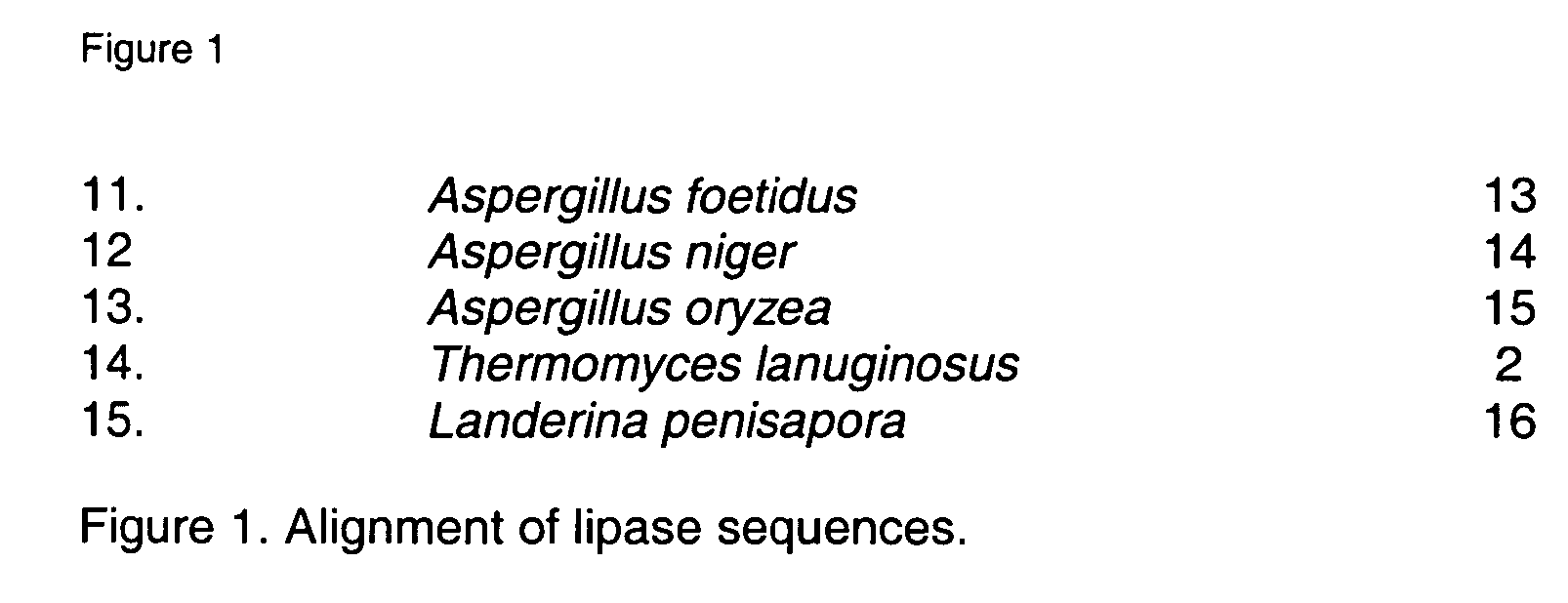Composition comprising a lipase and a bleach catalyst
a technology of lipase and bleach catalyst, which is applied in the direction of detergent compounding agents, liquid soaps, enzymology, etc., can solve the problems of lacing malodor, and difficult to remove dairy soils during the laundering process
- Summary
- Abstract
- Description
- Claims
- Application Information
AI Technical Summary
Benefits of technology
Problems solved by technology
Method used
Image
Examples
example 1
Production of Enzyme
[0108] A plasmid containing the gene encoding the lipase is constructed and transformed into a suitable host cell using standard methods of the art.
[0109] Fermentation is carried out as a fed-batch fermentation using a constant medium temperature of 34° C. and a start volume of 1.2 liter. The initial pH of the medium is set to 6.5. Once the pH has increased to 7.0 this value is maintained through addition of 10% H3PO4. The level of dissolved oxygen in the medium is controlled by varying the agitation rate and using a fixed aeration rate of 1.0 liter air per liter medium per minute. The feed addition rate is maintained at a constant level during the entire fed-batch phase.
[0110] The batch medium contained maltose syrup as carbon source, urea and yeast extract as nitrogen source and a mixture of trace metals and salts. The feed added continuously during the fed-batch phase contains maltose syrup as carbon source whereas yeast extract and urea is added in order t...
example 2
AMSA—Automated Mechanical Stress Assay—for Calculation of Relative Performance (RP)
[0112] The enzyme variants of the present application are tested using the Automatic Mechanical Stress Assay (AMSA). With the AMSA test the wash performance of a large quantity of small volume enzyme-detergent solutions can be examined. The AMSA plate has a number of slots for test solutions and a lid firmly squeezing the textile swatch to be washed against all the slot openings. During the washing time, the plate, test solutions, textile and lid are vigorously shaken to bring the test solution in contact with the textile and apply mechanical stress. For further description see WO 02 / 42740 especially the paragraph “Special method embodiments” at page 23-24. The containers, which contain the detergent test solution, consist of cylindrical holes (6 mm diameter, 10 mm depth) in a metal plate. The stained fabric (test material) lies on the top of the metal plate and is used as a lid and seal on the conta...
example 3
GC—Gas Chromatograph—for Calculation of Risk Factor
[0120] The butyric acid release from the lipase washed swatches are measured by Solid Phase Micro Extraction Gas Chromatography (SPME-GC) using the following method. Four textile pieces (5 mm in diameter), washed in the specified solution in Table 3 containing 1 mg / l lipase, are transferred to a Gas Chromatograph (GC) vial. The samples are analysed on a Varian 3800 GC equipped with a Stabilwax-DA w / Integra-Guard column (30 m, 0.32 mm ID and 0.25 micro-m df) and a Carboxen PDMS SPME fibre (75 micro-m). Each sample is preincubated for 10 min at 40° C. followed by 20 min sampling with the SPME fibre in the head-space over the textile pieces. The sample is subsequently injected onto the column (injector temperature=250° C.). Column flow=2 ml Helium / min. Column oven temperature gradient: 0 min=40° C., 2 min=40° C., 22 min=240° C., 32 min=240° C. The butyric acid is detected by FID detection and the amount of butyric acid is calculated b...
PUM
| Property | Measurement | Unit |
|---|---|---|
| density | aaaaa | aaaaa |
| density | aaaaa | aaaaa |
| density | aaaaa | aaaaa |
Abstract
Description
Claims
Application Information
 Login to View More
Login to View More - R&D
- Intellectual Property
- Life Sciences
- Materials
- Tech Scout
- Unparalleled Data Quality
- Higher Quality Content
- 60% Fewer Hallucinations
Browse by: Latest US Patents, China's latest patents, Technical Efficacy Thesaurus, Application Domain, Technology Topic, Popular Technical Reports.
© 2025 PatSnap. All rights reserved.Legal|Privacy policy|Modern Slavery Act Transparency Statement|Sitemap|About US| Contact US: help@patsnap.com



